1. Find The Best Keywords For Your Site
Keywords are the foundation of SEO. Although content is king, keywords come first: they decide what sorts of users will find you in search. And since you want to be found by the right users, you’d better choose your keywords wisely.
What kind of keywords are good for your site?
- They have a high search volume.
In non-SEO terms, it means lots of people type those keywords into search bars. A few hundred searches per month is good, but going higher is always encouraged. The more, the better.
- They accurately capture search intent.
The relationship between a site owner and the users works like any business transaction: if you don’t offer them what they want, they won’t take it.
It’s like buying new shoes. If you are an adult with a size 7.5, you are not going to buy children’s shoes (not for yourself, anyway). And looking for generic shoes without anything specific in mind will take you forever to find what you really need.
Keywords are much the same. If you have an online store where you sell shoes, then a product page optimized for the keyword “shoes for women size 7.5” will do a much better job than one saying “shoes for women” or even just “shoes.” Bottom line: use keywords which describe precisely what your target audience wants to find.
- They aren’t too competitive.
High competition for a keyword means many other sites are already ranking for it – and beating them all won’t be easy. But pretty much every keyword has a less competitive version. You just need to find and use it.
How do you find keywords which match all these criteria?
For search intent, you must know your target audience and their needs really well, and then use your best judgment. Other factors can be represented in numbers, and that’s where SEO tools come in, such as WebCEO’s Keyword Suggestions tool.
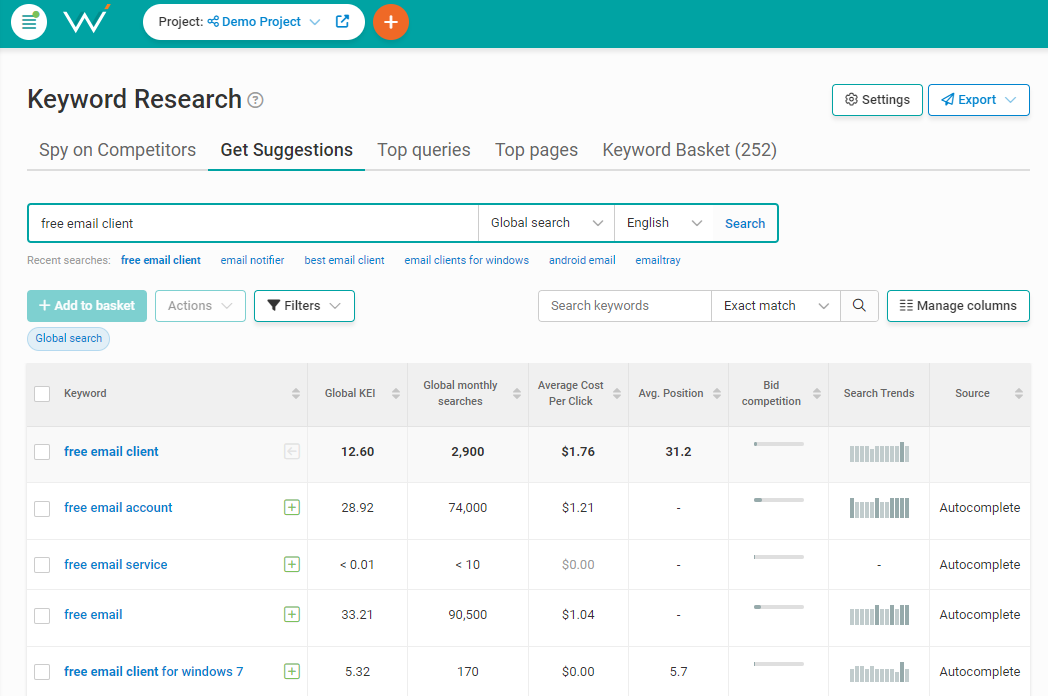 Screenshot from WebCEO, September 2024
Screenshot from WebCEO, September 2024Do you have any keyword ideas of your own? Enter them in the field and press Search. The tool will generate a table of related keywords, and then you just pick the most promising ones.
2. Optimize Your Pages With Keywords
Got your keywords? Great. Now, you need to make sure you are using them well.
For maximum effectiveness, your site pages must have keywords in these places:
- Page URL
- Page title
- Meta description
- H1-H4 headings (even better if you have a table of contents)
- Throughout the text itself
- Image filenames and ALT texts (for Google Image Search)
- Video transcripts (if you have videos)
Scan your site pages with WebCEO’s Landing Page SEO tool to check the state of your keyword placement.
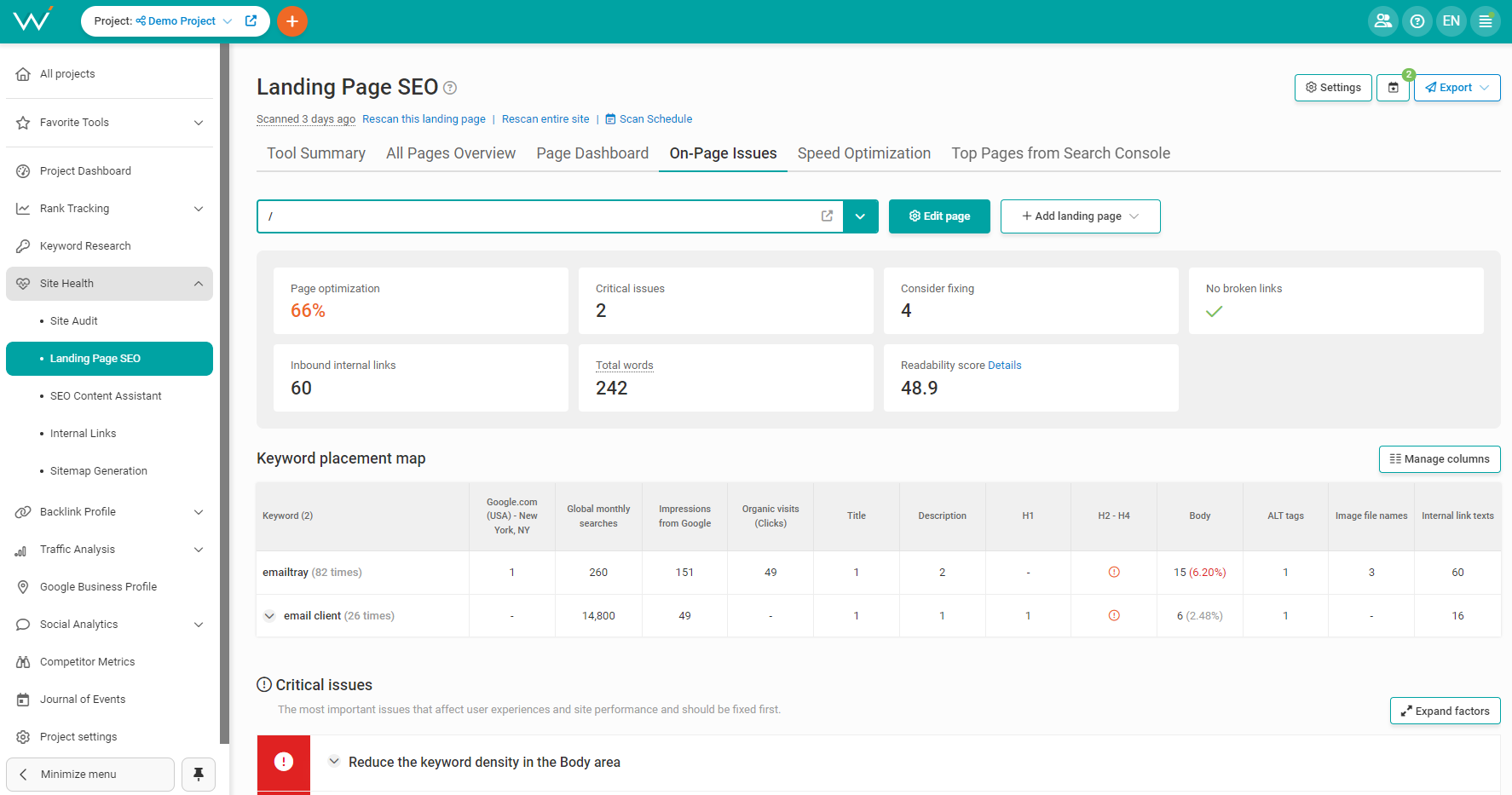 Screenshot from WebCEO, September 2024
Screenshot from WebCEO, September 2024If the tool finds any spaces that could be filled with keywords, do it and run another scan afterward. Instant improvement before your eyes!
One more thing: while having keywords is a must, avoid going overboard with them. One set of related keywords per page, or even one keyword per page is usually enough. Then weave the keywords into your text in a natural-sounding way. The gold standard for content is normally written text with helpful information.
3. Optimize Your Site Structure
It’s easy to turn your website into a poorly interlinked mess if you don’t know what you are doing.
When you do know what you are doing, you can help your most important pages receive a significant ranking boost – just by placing links correctly.
Your users will appreciate it, too. Who doesn’t like having all the content they need at their fingertips?
So here’s the recipe for an optimal site structure:
- Page hierarchy. Picture a tree: the home page as the root and the destination pages (i.e. landing pages, product pages, blog articles) at the ends of the branches.
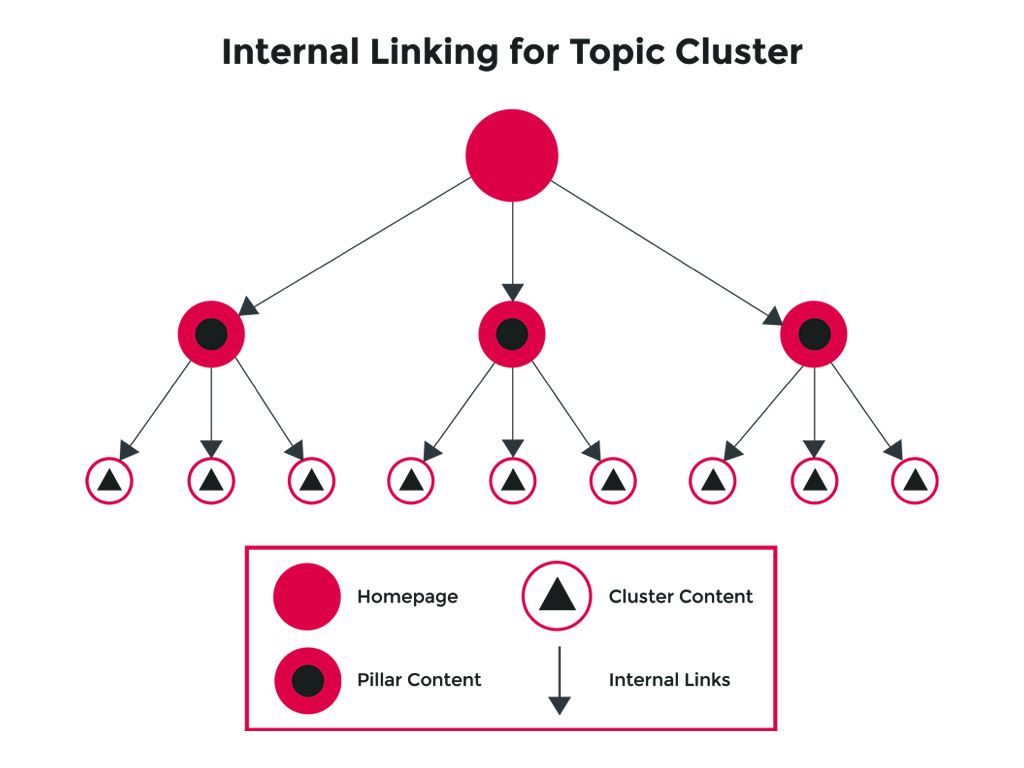 Screenshot from IncreMentors.com, January 2024
Screenshot from IncreMentors.com, January 2024- Topic clusters. It’s good practice to interlink pages that are dedicated to related topics.
- Navigation bar. A bar at the top (less usually on the left side) of the screen, containing links to the most important site pages (e.g. home page, About Us, Contact Us).
- Footer bar. Another bar at the bottom of a page, containing the same links from the navigation plus some others, at your discretion. Often, the footer bar contains social media links.
- Breadcrumbs. Have you ever seen a bunch of links in a row, something like Home » Category » Subcategory » Page? They are called breadcrumbs and they help users keep track of where exactly they are on a website.
- Three-click rule. An unspoken rule says: users should be able to get from any page A to any other page B in three clicks or fewer.
But to use links on your site like a pro, you want to know exactly how much authority your web pages have. And you can find out with the right SEO tools.
Scan your site with WebCEO’s Internal Links tool to get this information.
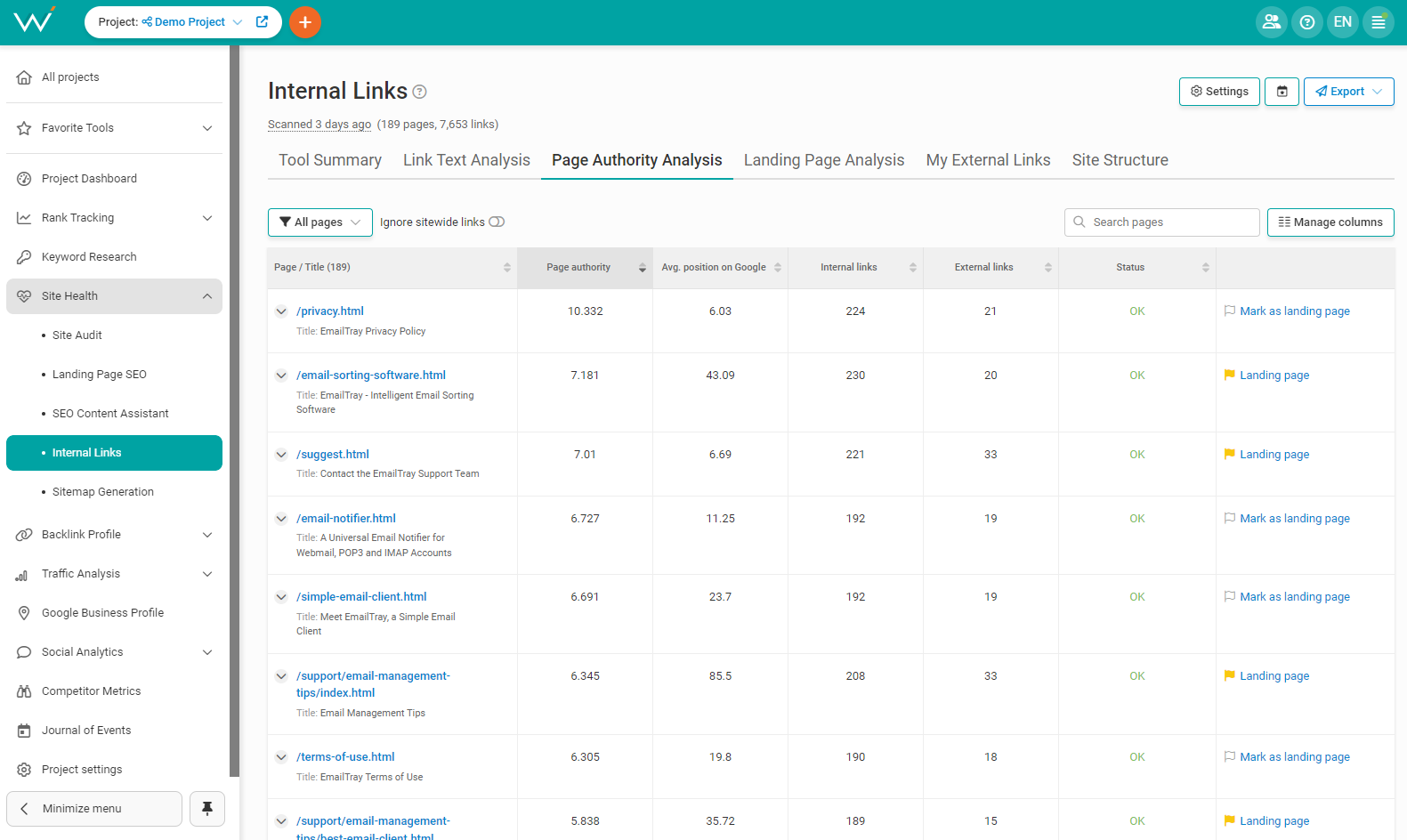 Screenshot from WebCEO, September 2024
Screenshot from WebCEO, September 2024This tool will reveal the pages with the highest amount of link juice. Proceed to share it with your most valuable pages just by linking to them from those high-authority pages.
This practice is at its most effective when the interlinked pages are related to each other through their topics – in other words, when they form a topic cluster. For example, a page about the best toothbrushes and another about the best toothpastes. It’s natural to link the two together, so a slight ranking boost to both is guaranteed.
4. Max Out Your Loading Speed
How long is too long? Five seconds may not seem like much, but if that’s how long it takes your page to load, most users will have already left.
People hate slow loading pages. People hate waiting in general. Whatever the place or the website, everybody wants to be serviced without delay.
And Google concurs. That’s why site loading speed is a major ranking factor, one you absolutely must not neglect.
And it’s one of the easiest ones to improve, too!
First, scan your site with WebCEO’s Speed Optimization tool.
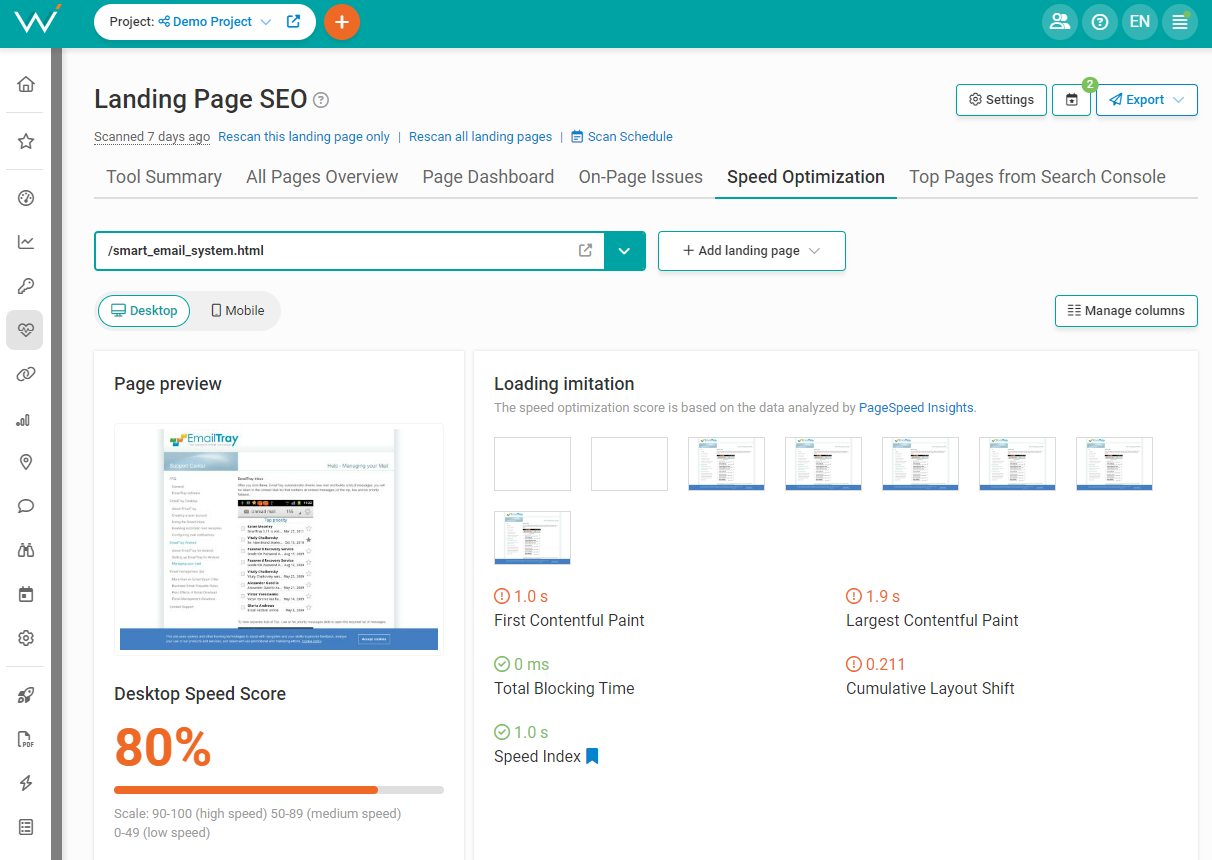 Screenshot from WebCEO, September 2024
Screenshot from WebCEO, September 2024Not only it measures your pages’ loading speed and Core Web Vitals, it also offers constructive criticism by detecting what’s slowing your website down. Just follow the tips from the report and watch your website soar.
And remember to be on constant alert for any slow loading site pages. Set the Speed Optimization tool to send you regular reports, and if you find a page that’s dragging its feet, help it take off.
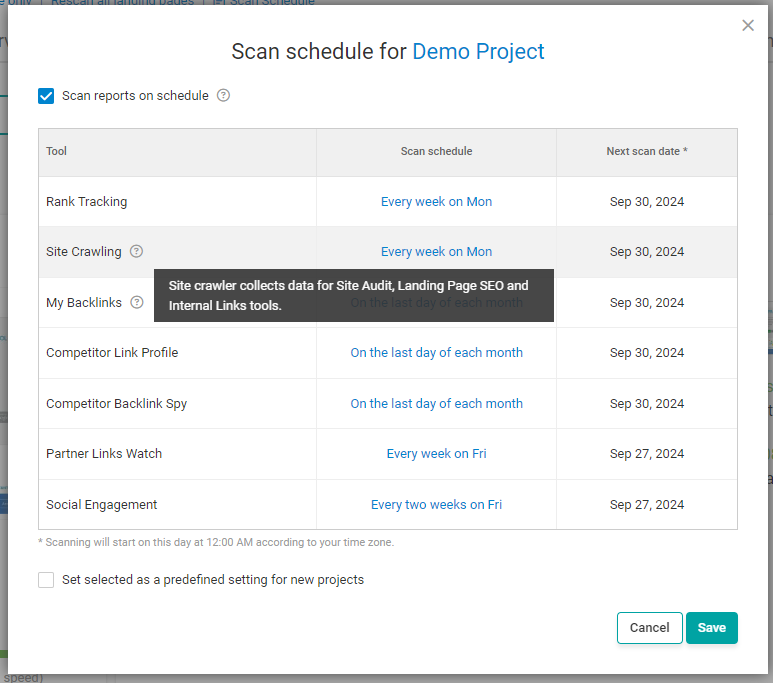 Screenshot from WebCEO, September 2024
Screenshot from WebCEO, September 20245. Audit Your Site For Errors — And Fix Them
Nothing is perfect, not even the best website in the world. Things break, errors appear. But no self-respecting site owner will let things stay broken – that’s recipe for losing your customers!
You are better than that, too. Scan your site for errors now with WebCEO’s Technical Audit tool.
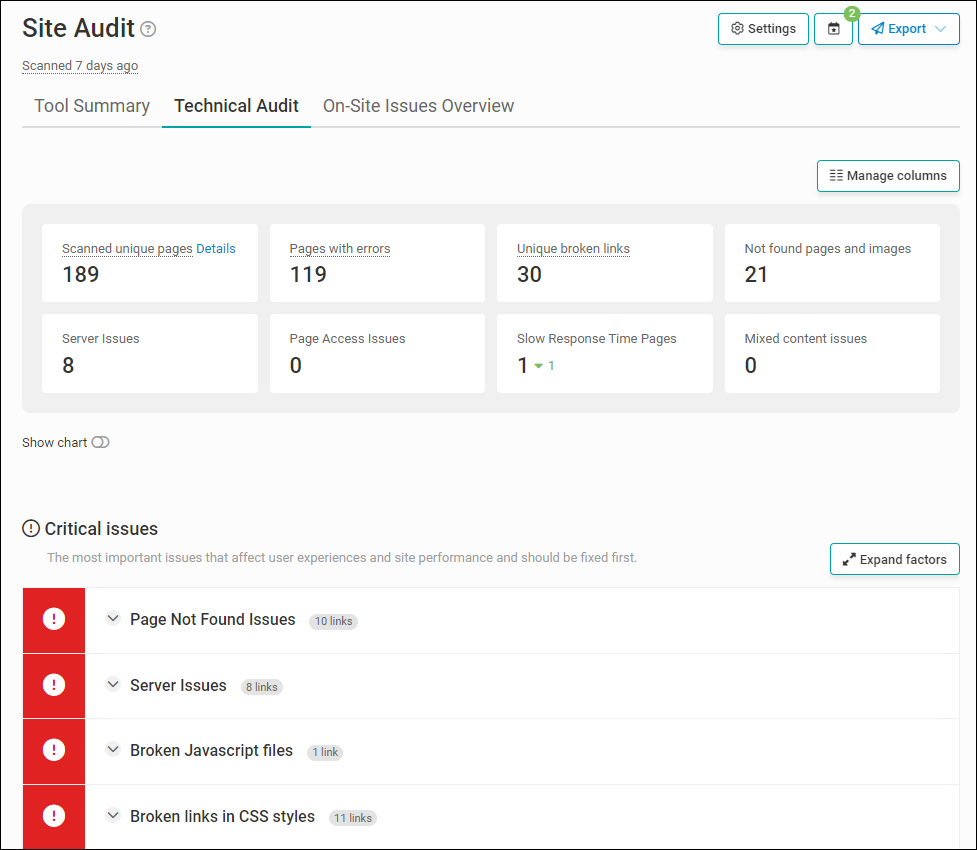 Screenshot from WebCEO, September 2024
Screenshot from WebCEO, September 2024This tool detects all kinds of hiccups, from broken links to more serious issues like server errors. Look upon your report and do not despair. It’s merely a list of fixable things.
You can solve those problems yourself or send the report to your site admin and let them handle it. After the job is done, rescan your site and generate another report showing the drop in errors. Your client will love it.
And yes, the Technical Audit tool can also send automated scheduled reports.
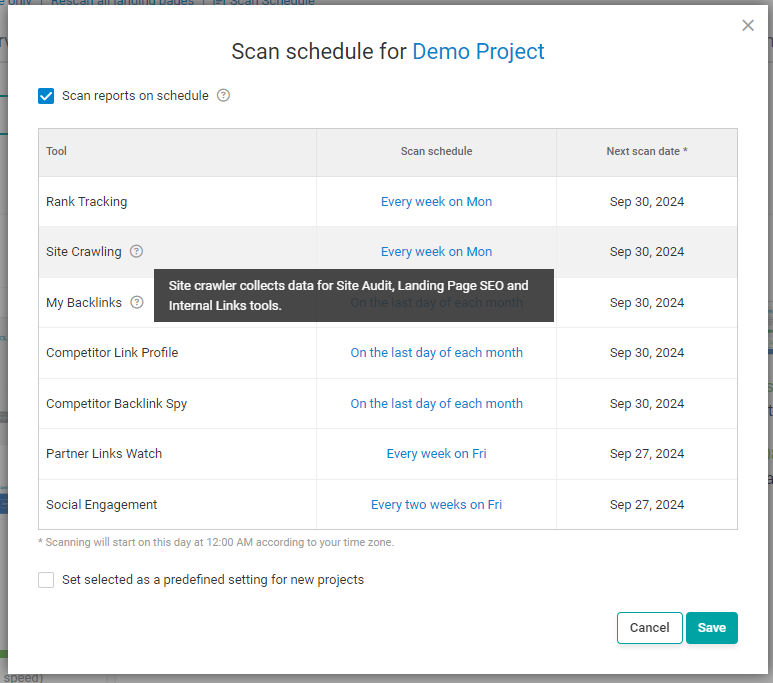 Screenshot from WebCEO, September 2024
Screenshot from WebCEO, September 20246. Check The Quality Of Your Backlinks
What do you think is the number one ranking factor? Which one of them can give you the highest ranking boost?
The hint is right there in the heading above. That’s right: backlinks.
Links from other sites pointing to yours. If your site isn’t on Google’s #1 page, then lack of good backlinks is most likely why (assuming everything else is okay).
To see if you have a backlink problem, you need to check the current state of your link profile.
How can you do that? Scan your site with WebCEO’s Backlink Checker.
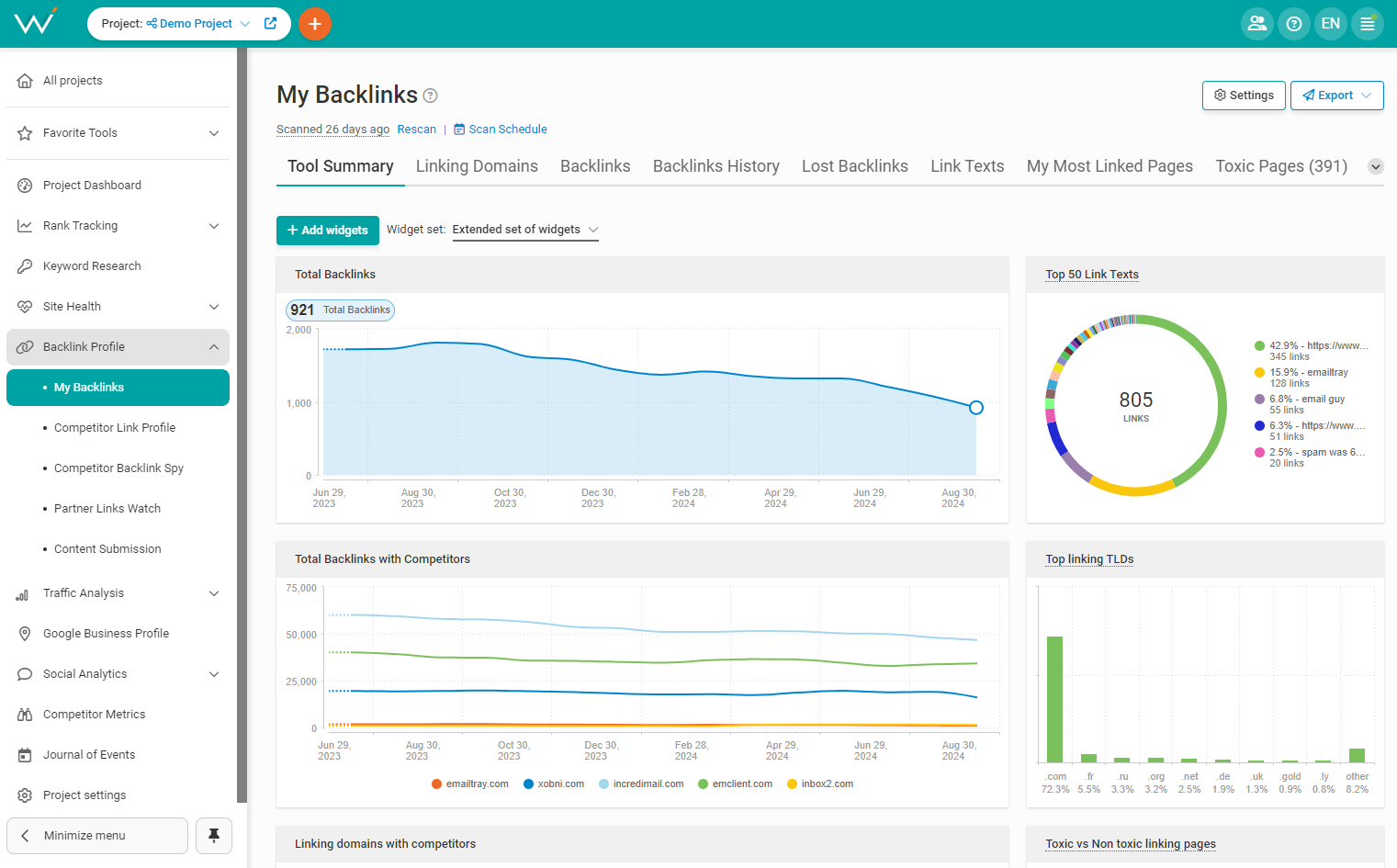 Screenshot from WebCEO, September 2024
Screenshot from WebCEO, September 2024What should you be looking for there?
- Total backlinks and linking domains. The ratio between them can give you a rough idea about how many links each domain gives you on average. If that ratio is too high (e.g. 1000 backlinks per domain), then most of those backlinks are probably of poor quality.
- Loss of backlinks. Sometimes sites stop linking to you. Maybe they found someone with better content than yours, maybe they took down the page with the backlink, or maybe even their site died. Whatever the reason, it can affect you rankings negatively.
- Backlink texts. A good anchor text tells users what they are going to find on the other side of the link. If it fails to do that, fewer people will click on the link. Look for non-descriptive anchor texts (such as “click here”) that are keeping your rankings down – changing those texts can be just what you need.
- Harmful backlinks. Spammy links from low-quality sites will do you no favor. If you have too many toxic backlinks, you will have to take them down.
Knowing the state of your link profile opens two different paths to improving it: link building and link detoxification. Let’s start with the former.
7. Revise And Expand Your Link Building
If you want to gain new backlinks and increase your site rankings, you’ll want to do some link building.
Which sites give the best backlinks?
- They are highly authoritative;
- They are topically related to your site.
And the closer they fit these criteria, the harder it will be to land your backlinks there. Those sites have high standards.
Link building is a whole challenge of its own – but there are plenty of good strategies for that.
To name but a few:
- Have high-quality (and ideally unique) content on your site that others will want to link to;
- Find broken links on other sites and offer those sites’ owners to link to your content instead;
- Find unlinked mentions of your site or brand and offer to add a backlink;
And we strongly encourage you to try out even more. You may find some of the link building strategies easier or more effective than others.
What About Steps 8-14?
You bet it’s just the beginning. Do you want to take up even more SEO techniques to start preparing for 2025?
Good news: the full SEO guide is exclusively available to WebCEO users in PDF format, and it’s completely free. Download it now and get a head start on your competitors!
